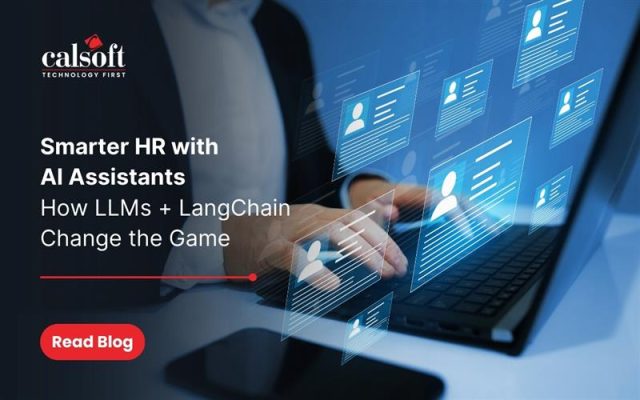Industry 4.0 is here, and it’s revolutionizing how manufacturing companies build.
Companies have moved to a digitized method of building products. It’s been a long haul from using manual processes to PLC-driven machinery to advanced digital technologies enabling connected machines, automated lines, and automated processes.
In many ways, Independent Software Vendors (ISVs) are enabling Industry 4.0 by building products to automate processes, improve efficiency in operations, and increase ROI for companies.
In Industry 4.0, interaction is not restricted to humans-to-humans or humans–to-machines. Interactions can happen at a machine-to-machine level, i.e., manufacturing machines send data to other devices, and technologies like AI help complete the tasks. Devices and machines are connected through smart technologies like the Industrial Internet of Things (IIOT) that continuously exchange data.
That’s why data could rightly be called the raw material for industries. Data may not be a tangible thing such as steel, plastic, or other materials, but it is crucial for companies to build products and meet customer demands in the age of smart manufacturing.
Let’s look at how this raw material can help companies to grow and thrive in Industry 4.0.
Role Of Data in Industry 4.0
1. Prevent downtime
A company can lose millions of dollars and lose 5% to 20% of its productivity due to downtime. No wonder downtime is a nightmare for every company. Downtime can happen for several reasons – wear and tear, external conditions, and unpredictable changes. Data can help companies prevent such downtimes and ensure business continuity. Take Bosch, for instance. They have connected over 250 plants worldwide using RFID, wireless connections, sensors, tablets, and smartphones. The sensors in the connected devices exchange data related to processing times, machine wear and tear, etc. This helps them to predict issues and take pre-emptive measures to ensure continuous operations. ISVs can support companies with predictive maintenance solutions that analyze the data available on different assets, identify issues, and resolve them before it leads to unplanned downtime.
2. Respond to market demands
Whether it’s Starbucks or Netflix, every company is trying to retain its customers through hyper-personalization. This is driving exciting changes in manufacturing too.
Typically, a company would manufacture a one-size-fits-all product. For example, imagine buying a shoe. Shoes would normally be available in limited colors and sizes. There was little scope for customizing a pair of shoes. However, Adidas introduced extreme customization in shoes. They started a pilot factory in Germany called Speed Factory. In this factory, the company used simulation software to create a digital twin of the shoe. They analyzed the data and tested the shoe before taking it for production. This approach helps the customer have a greater say in the production process and receive exactly what they desire. Customer demands keep evolving. What worked yesterday will become obsolete today. ISVs can develop manufacturing companies to create customized products in response to the evolving customer needs and general market trends with intelligent products that enable flexible manufacturing.
3. Improve production efficiency
Let’s go back to the Adidas example. They used digital twin technology to shorten the time taken between designing and commercializing the shoe by 30%. They were able to respond to the market demands quickly, and also produce 300 million more shoes! Similarly, Bosch studied the testing data of their 30,000 hydraulic valves and realized that out of the 90 separate testing steps they performed, 21 could be eliminated. This helped them to reduce their inspection time by 17.4%. As these examples demonstrate, data can improve efficiency at every stage of production – from ideation to prototyping, testing, and production. ISVs are increasing their focus on building innovative and quality products to enable just that. What matters is how they leverage the data optimally.
4. Improve supply chain
The supply chain is the fuel of a successful manufacturing company. To stay on track, companies need real-time information on their inventory so they can meet the customer’s demands on time. Technologies such as big data, cloud, IIoT, augmented reality (AR) help companies gather data about the supply chain from different systems and locations. Take BJC healthcare, for instance. They have 15 hospitals in Missouri and Illinois. They shifted from manually managing the inventory to using RFID to gather real-time data about the medical supplies and manage the supplies efficiently. The real-time data also enabled the hospital to stop losses due to storing expired drugs. Such examples translate extremely well to the manufacturing paradigm too. As companies go global, ISVs can help companies further optimize the supply chain management process and meet customer demands on time by using real-time data.
5. Reduce costs
Earlier, cost savings meant offshoring the manufacturing process to other countries. However, as we saw in the case of BJC healthcare, costs can also be reduced if the supply chain is managed efficiently or when unplanned downtime is prevented through preventive maintenance. With the help of data, ISVs can design predictive maintenance strategies and also help them save as much as $5 million on storing rarely used stock of material.
Conclusion
Companies will generate more data as they move towards using connected devices and machines. Data is the new oil, and it will remain a mainstay in the future. What matters is how companies use this data to improve operations and reduce wastage and how ISVs build products based on these insights.
Calsoft is helping product companies and ISVs build products that look to make the most of data and improve their business outcomes. We leverage our AI/ML, cloud, IoT, and data analytics expertise to transform products. We provide:
– Holistic solutions for embedded systems
– Assistance in shifting from traditional PLM model to digital twin systems
– Support in digital mobility of applications, knowledge, and products
– Transformation of processes, logistics, supply chain, and other solutions digitally
– Right tools to make the shift to Industry 4.0
To know more about how we can support the shift to Industry 4.0, contact us.






